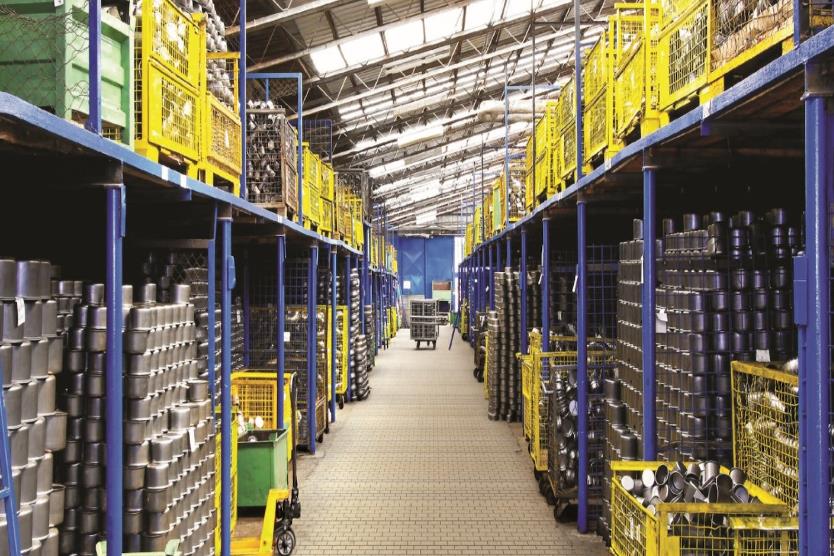The first company in ASRS use, and the development of ASRS
The first recorded use of an Automated Storage and Retrieval System (ASRS) dates back to the late 1950s. General Mills, a leading food processing company, implemented one of the earliest ASRS systems in their warehouse located in the United States.
General Mills developed an automated system known as the "Automated Material Handling System" (AMHS) to improve the efficiency of their storage and retrieval operations. The AMHS utilized conveyor belts, cranes, and computer control to automate the movement of pallets and products within the warehouse. This pioneering ASRS system revolutionized the way materials were stored and retrieved, setting the stage for further advancements in the field.
Since then, ASRS technology has been widely adopted across various industries, including manufacturing, distribution, retail, and logistics. The benefits of automation, such as increased productivity, reduced labor costs, improved inventory management, and enhanced accuracy, have contributed to the widespread adoption of ASRS systems in modern warehouses and distribution centers.

The development of Automated Storage and Retrieval Systems (ASRS) can be traced back several decades. Here's an overview of the key milestones and advancements in ASRS technology:
1. Early ASRS Systems: The concept of automated storage and retrieval dates back to the mid-20th century. Early systems used mechanical conveyors, cranes, and lifts to move and store materials in warehouses. These systems were typically semi-automated and relied on basic control mechanisms.
2. Introduction of Computer Control: In the 1970s and 1980s, computer control began to play a significant role in ASRS technology. The integration of computers allowed for more advanced control, optimization algorithms, and real-time tracking of inventory. This led to improved efficiency and accuracy in storage and retrieval operations.
3. Advancements in Hardware: Over the years, there have been significant advancements in the hardware components used in ASRS systems. Automated cranes, gantries, robots, and shuttles have become more sophisticated, offering higher speeds, greater load capacities, and improved precision. These advancements have enabled faster and more efficient storage and retrieval processes.
4. Integration with Warehouse Management Systems (WMS): ASRS systems started integrating with Warehouse Management Systems (WMS) in the 1990s and 2000s. This integration allowed for seamless communication and coordination between the ASRS and other parts of the warehouse, such as order picking and inventory management systems. The integration of ASRS with WMS has further increased operational efficiency, accuracy, and inventory visibility.
5. Introduction of AS/RS Technologies: The development of Automated Storage and Retrieval Systems has also seen the emergence of various technologies designed to optimize specific applications. Some notable examples include:
- Vertical Lift Modules (VLMs): VLMs are compact, vertical storage systems that use an elevator-like mechanism to retrieve and deliver items to the operator. They are particularly useful for small parts storage and order picking.
- Automated Vertical Carousels: Vertical carousels consist of rotating shelves that bring the required items to the operator. They are commonly used for storing and retrieving small to medium-sized items.
- Automated Shuttle Systems: Shuttle systems utilize autonomous shuttles or robots to move within a racking structure, accessing and retrieving items. These systems are known for their high-density storage capabilities and efficient order fulfillment.
6. Advancements in Software and Control: ASRS systems have seen significant advancements in software and control technologies. This includes the development of advanced algorithms for optimizing storage locations, routing, and inventory management. Real-time monitoring, predictive analytics, and machine learning techniques are also being applied to improve system performance and adaptability.
7. Integration of Robotics and Artificial Intelligence: Recent developments have seen the integration of robotics and artificial intelligence (AI) in ASRS technology. Robotic arms and mobile robots are being used to handle complex tasks, such as item picking and packing. AI algorithms are employed for real-time decision-making, predictive maintenance, and further optimization of system performance.
These are just some of the key developments in the evolution of ASRS technology. The field continues to advance, driven by the need for increased efficiency, accuracy, and adaptability in modern warehousing and logistics operations.
